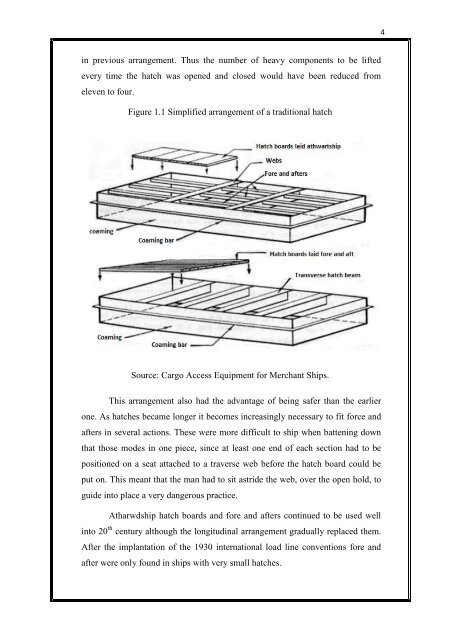Single pull macgregor type hatch cover.pdf - Cochin University of ...
Single pull macgregor type hatch cover.pdf - Cochin University of ...
Single pull macgregor type hatch cover.pdf - Cochin University of ...
Create successful ePaper yourself
Turn your PDF publications into a flip-book with our unique Google optimized e-Paper software.
in previous arrangement. Thus the number <strong>of</strong> heavy components to be lifted<br />
every time the <strong>hatch</strong> was opened and closed would have been reduced from<br />
eleven to four.<br />
Figure 1.1 Simplified arrangement <strong>of</strong> a traditional <strong>hatch</strong><br />
Source: Cargo Access Equipment for Merchant Ships.<br />
This arrangement also had the advantage <strong>of</strong> being safer than the earlier<br />
one. As <strong>hatch</strong>es became longer it becomes increasingly necessary to fit force and<br />
afters in several actions. These were more difficult to ship when battening down<br />
that those modes in one piece, since at least one end <strong>of</strong> each section had to be<br />
positioned on a seat attached to a traverse web before the <strong>hatch</strong> board could be<br />
put on. This meant that the man had to sit astride the web, over the open hold, to<br />
guide into place a very dangerous practice.<br />
Atharwdship <strong>hatch</strong> boards and fore and afters continued to be used well<br />
into 20 th century although the longitudinal arrangement gradually replaced them.<br />
After the implantation <strong>of</strong> the 1930 international load line conventions fore and<br />
after were only found in ships with very small <strong>hatch</strong>es.<br />
4

















